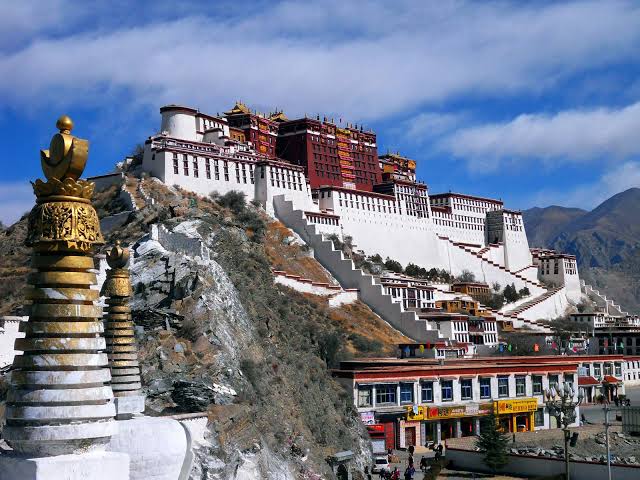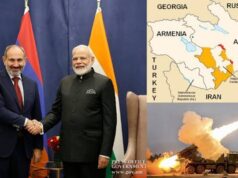Feb 13 the Tibetan Independence Day

February 13 was Tibetan Independence Day… Yes, Tibet may be Occupied but there is a Tibetan Government in Exile at Dharmshala. Tibet, historically was never a part of China. In fact at times, certain areas of China had been under the direct rule of Tibet.
Since 1959, Tibet has been under forced occupation of China. Its sovereignty claim on Tibet has no legal basis and rests solely on a self-serving historical narrative. This Chinese centric narrative is, quite inaccurate and highly misleading. However it is so persistently and forcefully pushed by Beijing, that the world has gradually accepted it and today largely treats Tibet as China’s internal affair, beyond its purview. All this happened because the Indian leadership of that time ( 1950s ) had limited strategic perspective.
The Chinese Communist Party since early 1950s, very cleverly began combining selected periods of past history together with with modern concepts of territorial statehood and sovereignty. They, In the process, turned the foreign empires of the past, most importantly the Mongol and Manchu Qing empires, as “Chinese” and “China”. The Mongol and Qing empires were not Chinese. They were both Inner Asian, Mongol and Manchu, respectively. Their rulers conquered, occupied and ruled China and the Chinese for centuries as part of their vast dominions. Both exercised authority way beyond the Chinese populated territories and even extended their reach to the Tibetan plateau. Using this theory, the PRC began claiming that it simply inherited sovereignty over Tibet from its predecessors. Using the argument, India can claim entire region from Afghanistan to South East Asia.Even Mount Kailash and Mansarovar, now in Tibet are integral part of Indian mindset ever since CREATION itself !!!
So today, it remains a fact that China has occupied Tibet against the will of the Tibetan people for nearly three generations. India has remained self-censoring to accommodate Beijing’s self-proclaimed “sensitivities” in the hope of buying peace. But it is high time we took a hard look at the implications of our silence on the illegitimacy of China’s presence in Tibet and of not just countering Beijing’s historical narrative on Tibet.
The PRC claims large tracts in India’s Arunachal and Ladhak. These claims led to war in 1962. The very validity of the PRC’s sovereignty claims to parts of India is directly and solely tied to Beijing’s forced military occupation over Tibet, and therefore to the same lopsided historical narrative.
Two Dutch experts on China and Tibet, Michael van Walt van Praag and Miek Boltjes have recommend a course of action which may lead to the Tibetan freedom.
Firstly the current attitude of appeasement, self-censorship and silence over Tibet must end. The entire international community must be encouraged to speak up on Tibet. Then only the Chinese leadership will strive to end the Tibetan China conflict through negotiations. To start with there must be devolution of power together with a settled boundary between Tibet and China. For this India must invite both the Government of China and the Tibetan Government in Exile and offer its mediation and good offices. This would send a signal to the entire international community that the conflict is not settled and remains a matter of international concern and responsibility.
Secondly, the narrative and language with respect to Tibet must change. It must be always emphasized that India has borders only with Tibet and not China. Tibet should always be refered as as an occupied country and India’s northern border with Tibet as the Indo-Tibetan border and not the Sino-Indian border. All references must convey that we are dealing here with an unresolved international conflict, not a Chinese domestic matter. Tibetans right to self-determination as a Nation must be upheld.
Thirdly, China’s aggressive behaviour towards India and Bhutan, its expansionism in Indian Ocean Region are already being actively countered by India. Time has come to ensure that there is no bullying and interference in Myanmar, Nepal, Sri Lanka, Maldives, Taiwan, Mongolia, and rest of Southeast Asia. Even freedom of navigation in Seas off Southern Coast of China has to be enforced.
Fourthly, unlike Taiwan, the conflict between China and Tibet is not an internal matter of China but an international conflict. India too has become a party to this conflict, since India not only shares a border with Tibet but also because it is only through, illegal occupation of Tibet that China has been able to lay claims on Indian territories in Arunachal and Ladhak. Even in case of Taiwan, Chinese behaviour can only be equated with say if suddenly India starts talking of forceful remerger of Pakistan and Bangladesh with India.
Fifthly, now onwards Tibet should NO MORE be treated as Core Matter of China but an international conflict. In fact India shelters large numbers of Tibetan refugees, including the Dalai Lama and the Tibetan government in exile. So Tibet, rather as also the whole Himalayan region, is very much India’s core interest, especially since Chinese have started talking of DAMMING the Brahmaputra and other rivers in Tibet.
Sixthly, in all its talks with China, the validity of the Shimla Agreement between British India and Tibet must always harped upon without any ambiguity, no matter what. Along with it, we also must keep raising the point of non-recognition of the illegal annexation of not only Tibet but also parts of our own Ladhak including those areas of Pak Occupied Ladhak ceceded by Pakistan to China. Non-recognition of sovereignty over territory taken by force is a fundamental norm of international law, which follows directly from the prohibition of the use of force against states, a cornerstone of the UN Charter.
Lastly, every month we need to raise the demand of “RENT PAYMENT “ of One Rupee by China for use of Indian Sovereign territory in POK for the China Pakistan Economic Corridor.




